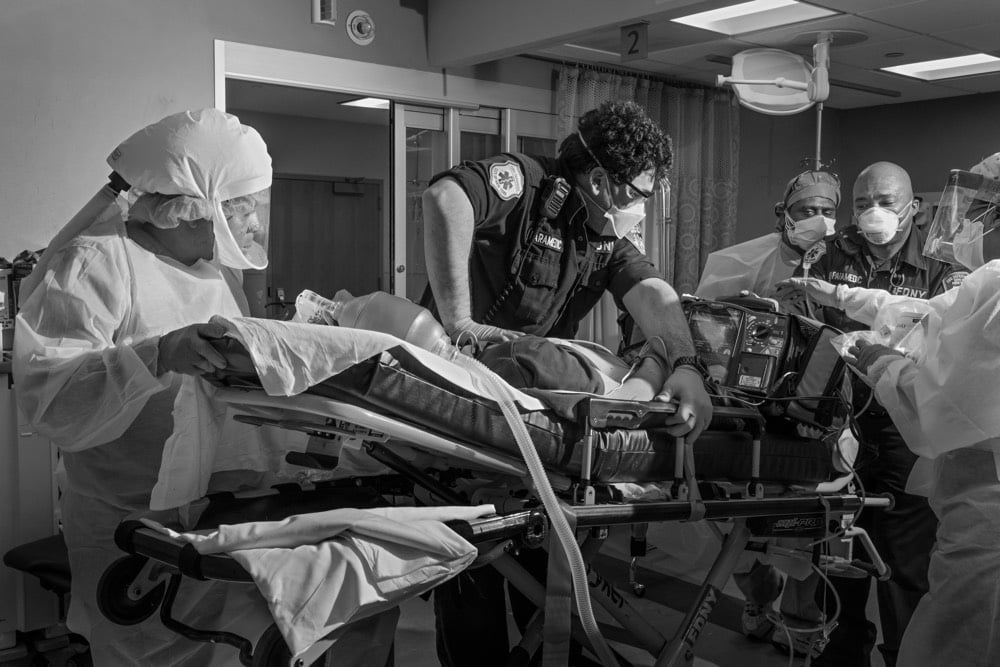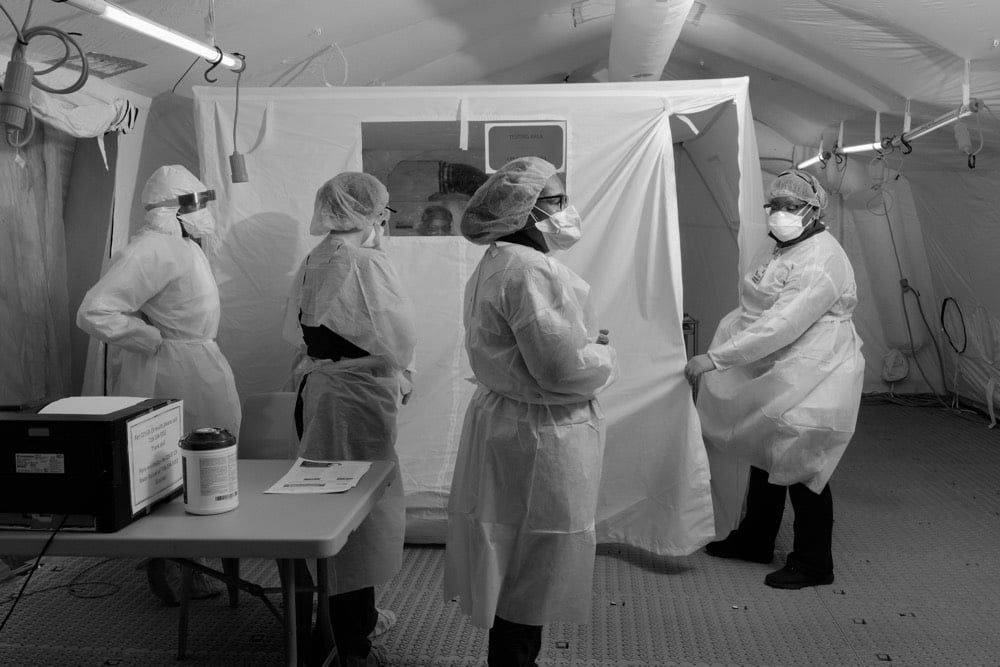The View from the Front Lines of NYC’s Public Hospitals


Clad in full PPE, photographer Philip Montgomery visited seven different NYC public hospitals over the course of a week for the NY Times Magazine, documenting the hospital workers’ fight against Covid-19, supply shortages, and intense working conditions.
At Elmhurst, the improvisation began as soon as the first surge of coronavirus patients started arriving in the middle of March. In order to more efficiently sift through the crowds and find the most severe cases, the staff set up a divider at the entrance. Medical workers armed with thermometers and oxygen monitors steered people with milder symptoms to a separate treatment tent. Those who were seriously ill went into critical care. Thirteen patients at the hospital died over a 24-hour stretch during the fourth week in March. A refrigerated trailer was parked behind the building to store dead bodies.
In a short behind-the-scenes video about his photos and the piece, Montgomery says “I think if the general public could stand where I was for at least 10 to 30 seconds, I think everyone would be staying home.”
From the same issue of the magazine, Dr. Helen Ouyang: I’m an E.R. Doctor in New York. None of Us Will Ever Be the Same. What initially started as an article about the situation in Italy rapidly escalates into NYC hospitals fighting those same battles.
Family members weren’t allowed into the hospital because they, too, could get infected or spread the virus to others if they themselves were sick. But Duca asked for permission from his supervisor to let the man’s wife and daughter in, just for a few minutes. “I saw his face when he looked at his wife coming inside this room,” Duca recalls. “He smiled at her. It was a fraction of a second. He had this wonderful smile.” He continues: “Then I saw that he was looking at me. He realized that there was something wrong if only his relatives were coming inside.” The man knew in that instant that he was going to die, Duca says. As the man’s breathing worsened, morphine was started. He died 12 hours later.
Read the whole thing; it’s upsetting, terrifying, and deeply humanizing. I wish Americans watched less TV news and read more — if everyone in the US read these articles, I believe the entire tone of this crisis would change and become more urgent.





Stay Connected